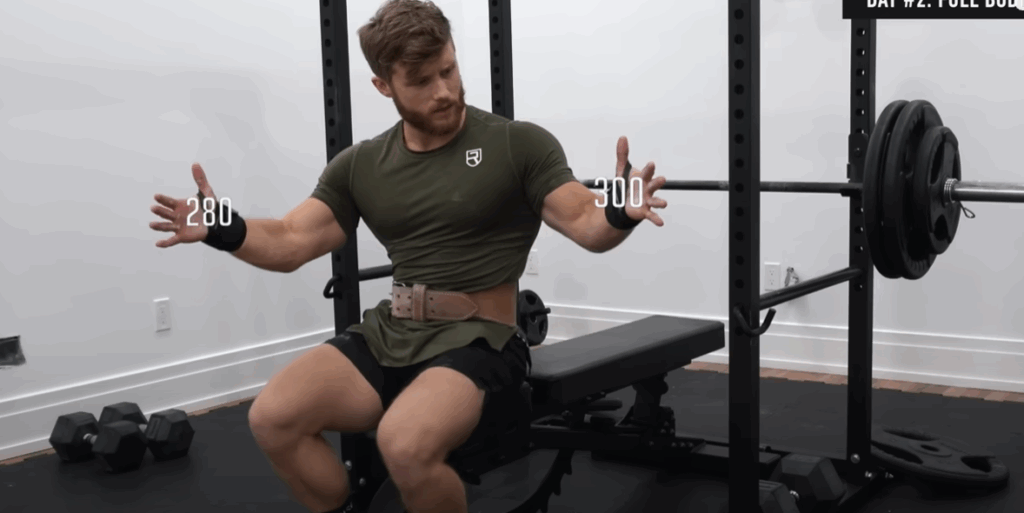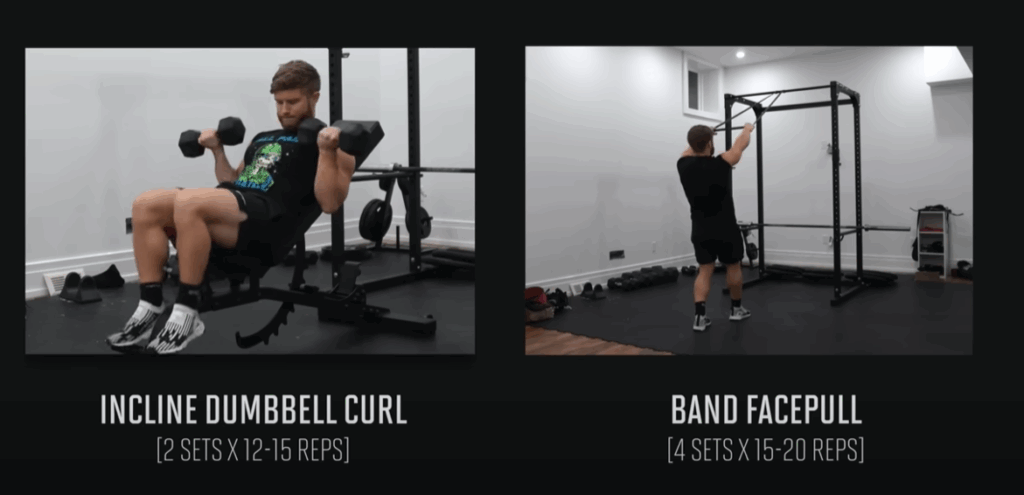Full vs. Partial Range of Motion: Which Builds More Muscle?
When it comes to maximizing muscle growth in the gym, one of the most debated training variables is range of motion (ROM). Should you be performing each rep with full depth and extension, or can shorter, partial reps deliver better results? While some argue that partials build more tension, others claim that full ROM is essential for hypertrophy.
Let’s break this down from both sides—the science-driven lifters who swear by full ROM, and the old-school lifters who lean into partial reps for their unique benefits. As with most fitness debates, the truth likely lies somewhere in between.

What Is Range of Motion?
Range of motion refers to the total movement that occurs around a joint during an exercise. A full ROM means you’re working the muscle through its entire contractile ability—from full stretch to full contraction. A partial ROM involves intentionally cutting the movement short—either at the bottom, top, or both.
For example, in a bicep curl, a full ROM would involve lowering the dumbbell until your arm is straight, then curling it all the way up to shoulder level. A partial ROM might stop short of full extension or avoid locking out at the top.
Why Some Lifters Prefer Partials
Many gym-goers favor partial reps for a few key reasons:
1. Heavier Loads
By shortening the movement, you’re often able to lift more weight. For instance, doing a half squat allows you to load significantly more than a full-depth squat. At first glance, this might seem like you’re creating more muscle tension by using heavier weights.
But here’s the catch: volume and tension are not only about the weight. If you reduce the movement’s distance, your total mechanical work may actually drop—even if the load increases. A 300-pound half squat might feel impressive, but it may provide less overall stimulus than a 225-pound full squat due to reduced range.
2. Constant Tension
One popular argument for partial reps is their ability to maintain uninterrupted tension on the muscle. By avoiding lockouts and staying within the mid-range, the muscle doesn’t get a break between reps. Some believe this “constant tension” leads to more time under tension and better gains.
In fact, a 2017 study comparing full ROM to partial ROM skull crushers found that the partial ROM group saw nearly double the muscle growth over eight weeks. Why? Possibly because the triceps stayed activated throughout the entire set, never getting a moment to rest at the top of the rep.
However, it’s important to note that these results were seen with a single-joint, free-weight isolation exercise, which tends to lose tension at certain angles. In contrast, cable machines and many compound movements naturally keep the muscle under tension, even through a full ROM.

3. Bodybuilding Anecdotes
Anecdotal support for partials often comes from observing professional bodybuilders. Many IFBB pros incorporate partial reps into their routines, often performing “pump” sets with shortened movements to exhaust a muscle group.
But we must be cautious here. These athletes often have elite genetics, enhanced recovery, and pharmaceutical help. Their results may not be due to partials alone. While their methods can offer insight, they should not override controlled, evidence-based research when designing your own program.
What the Research Says About ROM and Muscle Growth
A 2023 systematic review analyzed six key studies comparing full and partial ROM. The findings were clear:
- All four lower-body studies (including squats and leg presses) showed superior results for full ROM training.
- Upper-body studies were mixed. One showed no difference between full and partial curls, while the skull crusher study (mentioned earlier) favored partials.
One standout trial by Bloomquist et al. found that deep squats produced significantly more muscle growth than heavier but shallower squats. Even though lighter weights were used in the deep squat group, the hypertrophy across the quadriceps was much greater—especially in the vastus medialis and rectus femoris.
So, if we zoom out, the broader evidence favors training through a full ROM—particularly for the lower body.
When Partials May Make Sense
Despite the strong case for full ROM, there are strategic ways to incorporate partials into your training. They shouldn’t replace full-range work, but they can be a valuable tool in specific situations:
1. Isolation Exercises with Weak Tension Zones
Some exercises naturally lose tension at the top or bottom. For example, the lateral raise offers very little deltoid resistance at the bottom of the movement. Cutting out the bottom portion and focusing on the mid-range may make the set more effective.
Similarly, skull crushers and dumbbell flies lose tension when fully locked out. Avoiding lockout can help keep constant strain on the target muscle.
2. Extending Sets Past Failure
Partials can be useful as an intensity technique at the end of a set. After reaching failure with full ROM, you can perform a few extra partial reps to continue stressing the muscle. This method works especially well for isolation exercises on stubborn muscle groups like calves or rear delts.
3. Sport-Specific Goals and Powerlifting
Powerlifters often optimize for performance, not just hypertrophy. For instance, an arched bench press reduces range of motion, but can be advantageous in competition. Similarly, sumo deadlifts involve a shorter pull than conventional, yet allow better leverage for some lifters.
These strategic ROM reductions don’t necessarily hinder muscle growth—especially if the hardest part of the lift (usually mid-range) is still being trained effectively.
The Bottom Line: What Should You Do?
For most lifters, the smartest approach is to prioritize full ROM across the majority of exercises. This maximizes stretch, tension, and total work done by the muscle.
However, you don’t need to force extreme depth or mobility beyond your individual capacity. Squatting to slightly below parallel may be just as effective as going “ass to grass,” depending on your body structure and comfort.
Incorporating some partial reps, especially in isolation lifts or as finishers, can add value without derailing your progress. Use them strategically—not as your main training method.

Practical Guidelines
- Use full ROM for most compound lifts: squats, presses, rows, etc.
- On isolation lifts, consider partials if tension drops off significantly.
- Use partials after failure to push a set further—especially on your last set.
- Don’t copy pro bodybuilders blindly. Their routines may work for them, but evidence should guide your training decisions.
- Track progress with consistency. Whether using full or partial ROM, be honest about what you’re doing to measure progress accurately.
Conclusion
While both full and partial range of motion have their merits, the evidence consistently shows that full ROM training is superior for muscle hypertrophy—especially in the lower body. That said, using partial reps intelligently can enhance your routine when applied with purpose. As always, the key is balance: use science to guide your strategy, but don’t be afraid to experiment and adjust based on your body’s feedback.



